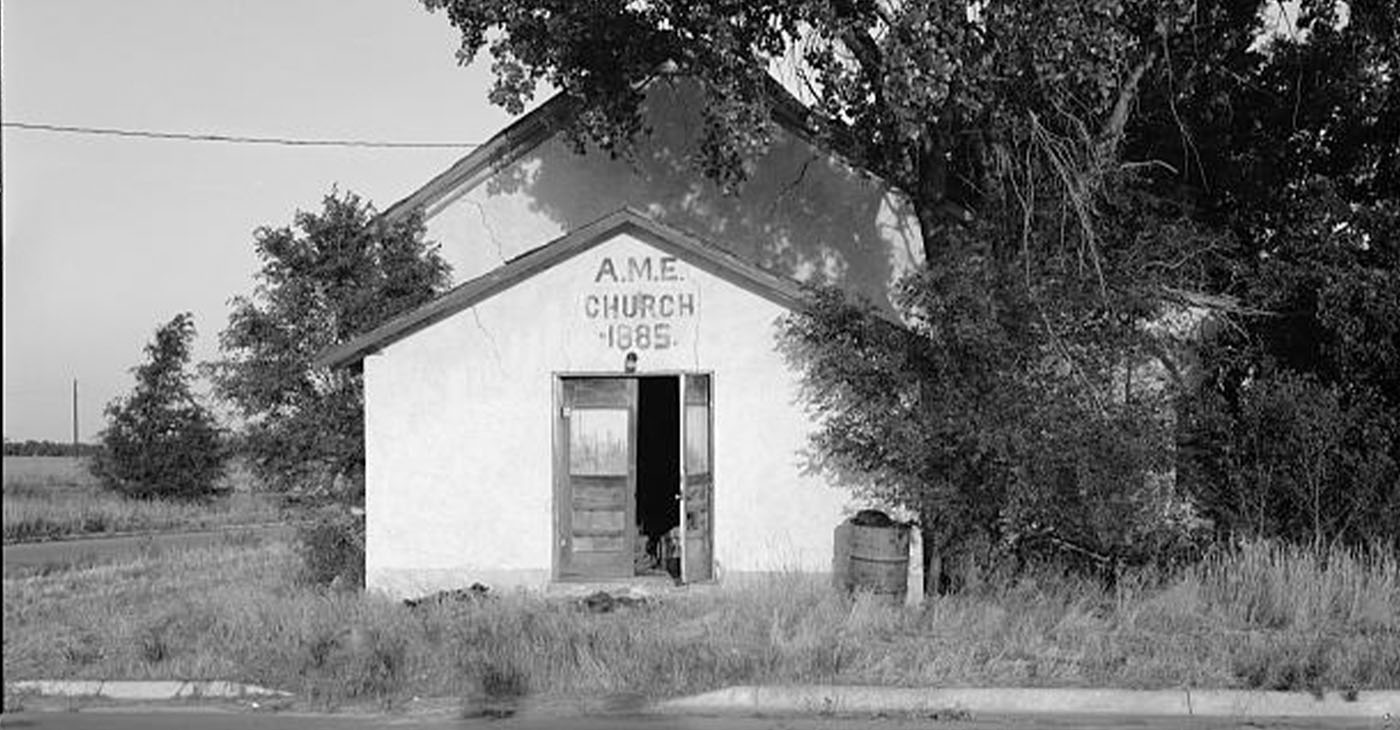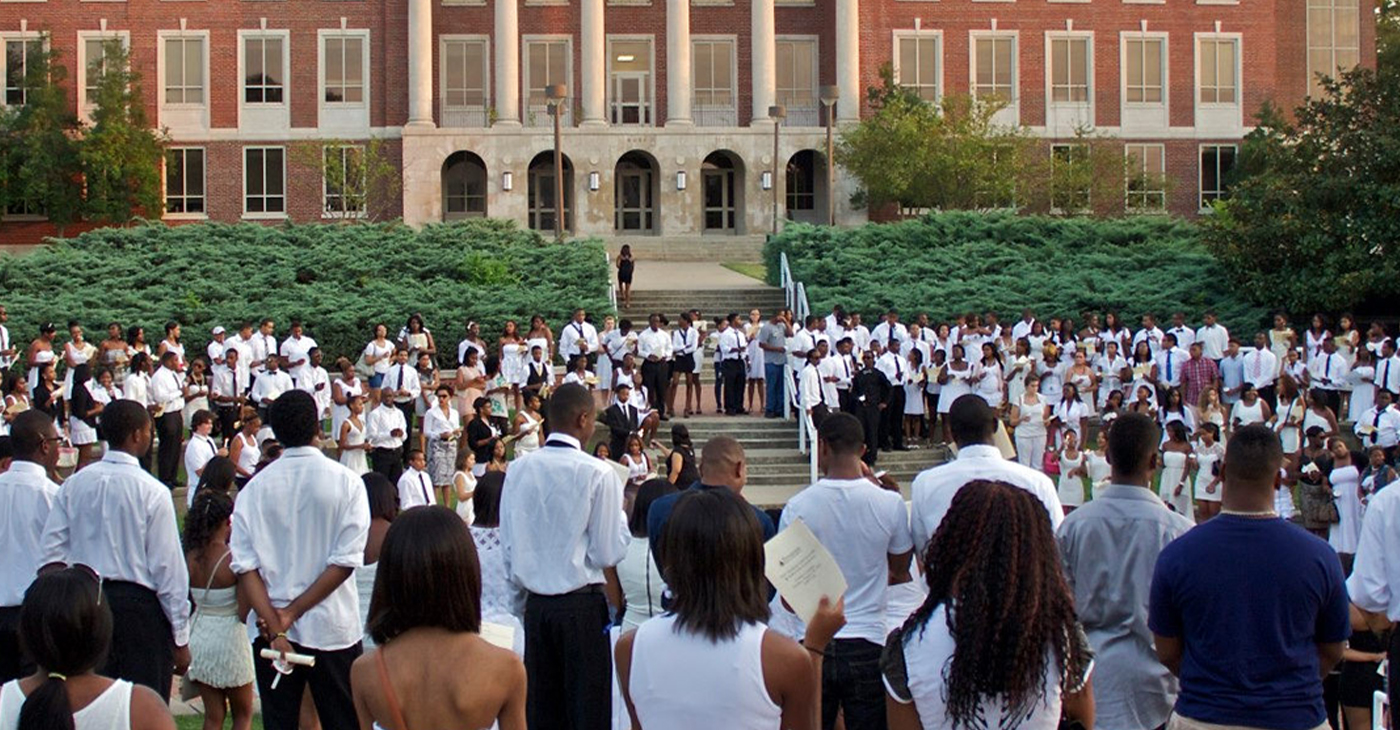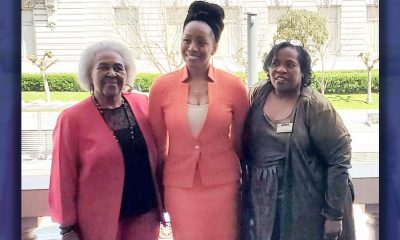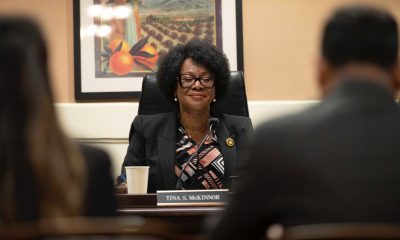#NNPA BlackPress
Randolph: Arizona’s Oldest Historically Black Community
NNPA NEWSWIRE — Often called “freedmen’s towns,” “freedom towns,” or “all-black towns,” African American municipalities were established throughout the United States by or for a largely African American population, many of whom were freed slaves or descendants of slaves. Although a handful of African American towns and communities were established before the American Civil War, it was not until Emancipation that freed Blacks were able to settle in large enough numbers to establish their own communities.
The post Randolph: Arizona’s Oldest Historically Black Community first appeared on BlackPressUSA.

(Part 1 of a series)
Prepared by Jennifer Levstik, WestLand Resources, Inc. and Dianne Post, lawyer for Randolph United Council | Arizona Informant
Established in 1925, the community of Randolph was touted as the newest townsite to rival Phoenix. By the 1930s, however, the community was still a small, rural townsite largely populated by white farmers and ranchers and a handful of African American, Mexican American, and Native American farm laborers. By the next decade, local demographics and settlement patterns had shifted, and the community was largely African American and subdivided along racial lines.
Whites settled to the west of Highway 87 and Blacks to the east of the highway. Over the next several decades, Randolph became a multi-generational African American community—a community that persists to the present day, while many other similar historically Black communities in Arizona have not survived.
The persistence of Randolph and its residents is evidenced in its setting, agrarian qualities, and long-standing cultural history. Even today, community members who have moved away regularly return for holidays, events, family gatherings, funerals, and proudly identify themselves as Randolphians.
Throughout its development, Randolph has continued to retain its racial heritage, expressed both through its population and its built environment, and today it remains the oldest extant historically Black community in Arizona associated with the Great Migration of the early to mid-20th century.
In 2022, the community of Randolph began the process of seeking designation as a Historic District in the National Register of Historic Places. It is expected that the designation will be announced at the end of this year. The following segments are excerpted from the nomination that was prepared for the community on their behalf.
Randolph Historic District (1925–2023)
Randolph, Arizona, is a small agricultural community located approximately 4 miles south of Coolidge and 14 miles equidistant from Florence to the northeast and Casa Grande to the west. The portion of the community that encompasses the proposed historic district is located on the east side of Highway 87, which denotes the highest collection of parcels, buildings, and archaeological sites associated with the persistence of memory of what the community landscape was and still represents to its members.
Randolph has retained its African American identity since its formal establishment in the mid- 1920s through the modern era and derives its significance as the oldest remaining historically Black community in Arizona associated with the Great Migration of the early to mid-20th century.
African American Settlements in the United States
Often called “freedmen’s towns,” “freedom towns,” or “all-black towns,” African American municipalities were established throughout the United States by or for a largely African American population, many of whom were freed slaves or descendants of slaves. Although a handful of African American towns and communities were established before the American Civil War, it was not until Emancipation that freed Blacks were able to settle in large enough numbers to establish their own communities.
It is estimated that between 1865 and 1915, at least 60 Black communities were created across the United States, with close to 20 in Oklahoma alone. The peak of Black settlement was in the 1920s, but in the western states—particularly Arizona and New Mexico—the trend continued into the 1940s. The exact number of these communities and towns is unknown, and estimates vary widely depending on the source.
The earliest freedom settlement established in what would later become part of the United States was Fort Mose. Fort Mose was founded in 1738 near present-day St. Augustine, Florida, a former Spanish colony. The community was populated by about 100 people escaping slavery, primarily from Georgia and the Carolinas.
They fled to Florida following a Spanish Edict of 1693 that stated that any enslaved male on an English plantation who escaped to Spanish-held Florida would be granted freedom if they converted to Catholicism or joined the Spanish militia. Many of the Black men that came to form this early settlement were blacksmiths, carpenters, farmers, boatmen, and cattlemen. Eventually women and children also joined the settlement.
Two years after its founding, during the War of Jenkin’s Ear, the British attacked the Spanish city of St. Augustine, targeting Fort Mose in an effort to return the former slaves to English-held plantations. After a hard-fought battle, the Spanish and Fort Mose settlers successfully expelled the British forces, and for the next 80 years of Spanish control of Florida, Fort Mose remained a haven for fugitive slaves. When Florida became part of the United States, the residents of Fort Mose fled to Cuba.
The number of Black settlements in the United States remained relatively low until Post-Civil War Reconstruction. In 1877, the first great wave of Black migration began when many newly freed slaves feared that the removal of federal troops from the American South would lead to unrest and retaliation. In response, many chose to move west.
The first Black community to be established west of the Mississippi River was Nicodemus, Kansas. It was widely advertised to prospective settlers as the “Largest Colored Colony in America,” with promises that land could be purchased for as little as a one-dollar deposit. In 1878, a year after Nicodemus was established, a large group of 380 African Americans from Kentucky made the arduous wagon trip to Kansas.
Upon their arrival, they discovered that Nicodemus was a flat, desolate town populated with sod dugouts. Many of the original settlers arriving from Kentucky took one look and turned around, but for those who stayed, the town eventually grew from sod to frame homes and had a baseball team, a post office, churches, schools, social clubs, an ice cream parlor, and two newspapers.
Upwards of 800 people at one time resided in the town during its peak. When word came that a rail station was proposed for the town, its population exploded, as did its influence in state politics. Nicodemus grew large enough that town leaders were able to push forward the election of the state’s first Black politicians to represent their interests.
This prosperity was short-lived, however, as the town was bypassed by the railroad, forcing many residents to leave. By 1910, only 400 people remained.
In the early 1900s, Oklahoma became a popular choice for resettlement by African Americans. One of the most successful communities, Boley, escaped the troubles of Nicodemus by having both railroad access and arable land for farming. By 1907, it boasted 1,000 residents in town, with many others who owned farms on the town’s edges.
Boley was so successful that prominent African American leader Booker T. Washington pointed to Boley as an example of a community success story, and it influenced the creation of the Black town of Mound Bayou in Mississippi. When Oklahoma gained statehood in 1907, however, Boley faced new discrimination as the Democratic party gained control of the state legislature. Newly enacted Jim Crow laws led to disenfranchisement and the slow dismantling of a once thriving town.
Although Oklahoma and Texas had the largest numbers of Black towns in the United States, at least nine similar towns were established in other western states, including Nebraska, California, New Mexico, Colorado, and Arizona. The towns of Allensworth in California, DeWitty in Nebraska, and Deerfield in Colorado had all been established by 1910.
Black communities in Arizona and New Mexico were established in the 1920s and 1930s, with thriving Black populations well into the 1950s. The five known Black migrant communities established in Arizona were Allenville, Mobile, McNary, Randolph, and Rillito. Because many of these communities were never incorporated and records were not kept of their existence, the probability remains that other such communities were established in Arizona.
Black settlements were often created for the same reasons all towns are created—to provide opportunities for economic advancement and money for speculators and to exploit natural resources. They differed, however, in that they not only sought economic and social freedom but also racial uplift. The communities were a haven from discrimination, lynching, and marginalization—a place where individuals and families could thrive without fear.
One of the strongest proponents of Black settlements was Booker T. Washington, a former slave who, among his many accomplishments, founded the Tuskegee Institute in Alabama.
During his career as an educator, author, orator, and presidential advisor, Washington played a role in helping establish and promote the idea of all-Black towns, including Mound Bayou in Mississippi, Gambling in Louisiana, Hobson City in Alabama, and Eatonville in Florida.
He encouraged Blacks to create their own communities in the face of segregationist policies, viewing these communities as one of the few ways for African Americans to have some autonomy in a country that did not see them as equal. And, for a short time, Washington was right.
Soon, however, the states that once offered a safe haven introduced policies that made establishment of such communities either more difficult or nearly impossible to maintain. Interestingly, through the mid-twentieth century, southwestern states became more appealing as a destination for African Americans until they, too, began to impede Blacks seeking economic and social advancement.
As a result of the lawsuit against SRP, Randolph is re-organizing, growing, and developing. They have formed a 501(c)3 organization Randolph United Council. If you can contribute to the community, please send donations to: Randolph United Council, P.O. Box 1869, Coolidge, Az 85128
The post Randolph: Arizona’s Oldest Historically Black Community first appeared on BlackPressUSA.
#NNPA BlackPress
IN MEMORIAM: Ramona Edelin, Influential Activist and Education Advocate, Dies at 78
NNPA NEWSWIRE — Born on September 4, 1945, in Los Angeles, California, activist Ramona Edelin’s early years were marked by a commitment to education and social justice. According to her HistoryMakers biography, after graduating from Fisk University with a Bachelor’s degree in 1967, she pursued further studies at the University of East Anglia in England. She earned her master’s degree before completing her Ph.D. at Boston University in 1981.
The post IN MEMORIAM: Ramona Edelin, Influential Activist and Education Advocate, Dies at 78 first appeared on BlackPressUSA.

By Stacy M. Brown, NNPA Newswire Senior National Correspondent
@StacyBrownMedia
Once upon a time, Black Americans were simply known as colored people, or Negroes. That is until Ramona Edelin came along. The activist, renowned for her pivotal roles in advancing civil rights, education reform, and community empowerment, died at her D.C. residence last month at the age of 78. Her death, finally confirmed this week by Barnaby Towns, a communications strategist who collaborated with Dr. Edelin, was attributed to cancer.
Born on September 4, 1945, in Los Angeles, California, Edelin’s early years were marked by a commitment to education and social justice. According to her HistoryMakers biography, after graduating from Fisk University with a Bachelor’s degree in 1967, she pursued further studies at the University of East Anglia in England. She earned her master’s degree before completing her Ph.D. at Boston University in 1981.
Edelin’s contributions to academia and activism were manifold. She was pivotal in popularizing the term “African American” alongside Rev. Jesse L. Jackson in the late 1980s.
Jackson had announced the preference for “African American,” speaking for summit organizers that included Dr. Edelin. “Just as we were called Colored, but were not that, and then Negro, but not that, to be called Black is just as baseless,” he said, adding that “African American” “has cultural integrity” and “puts us in our proper historical context.”
Later, Edelin told Ebony magazine, “Calling ourselves African Americans is the first step in the cultural offensive,” while linking the name change to a “cultural renaissance” in which Black Americans reconnected with their history and heritage.
“Who are we if we don’t acknowledge our motherland?” she asked later. “When a child in a ghetto calls himself African American, immediately he’s international. You’ve taken him from the ghetto and put him on the globe.”
The HistoryMakers bio noted that Edelin’s academic pursuits led her to found and chair the Department of African American Studies at Northeastern University, where she established herself as a leading voice.
Transitioning from academia to advocacy, Edelin joined the National Urban Coalition in 1977, eventually ascending to president and CEO. During her tenure, she spearheaded initiatives such as the “Say Yes to a Youngster’s Future” program, which provided crucial support in math, science, and technology to youth and teachers of color in urban areas. Her biography noted that Edelin’s efforts extended nationwide through partnerships with organizations like the National Science Foundation and the United States Department of Education.
President Bill Clinton recognized Edelin’s expertise by appointing her to the Presidential Board on Historically Black Colleges and Universities in 1998. She also co-founded and served as treasurer of the Black Leadership Forum, solidifying her standing as a respected leader in African American communities.
Beyond her professional achievements, Edelin dedicated herself to numerous boards and committees, including chairing the District of Columbia Educational Goals 2000 Panel and contributing to the Federal Advisory Committee for the Black Community Crusade for Children.
Throughout her life, Edelin received widespread recognition for her contributions. Ebony magazine honored her as one of the 100 Most Influential Black Americans, and she received prestigious awards such as the Southern Christian Leadership Award for Progressive Leadership and the IBM Community Executive Program Award.
The post IN MEMORIAM: Ramona Edelin, Influential Activist and Education Advocate, Dies at 78 first appeared on BlackPressUSA.
#NNPA BlackPress
Tennessee State University Board Disbanded by MAGA Loyalists as Assault on DE&I Continues
NNPA NEWSWIRE — Recent legislative actions in Tennessee, such as repealing police reform measures enacted after the killing of Tyre Nichols, underscore a troubling trend of undermining local control and perpetuating racist agendas. The new law preventing local governments from restricting police officers’ authority disregards community efforts to address systemic issues of police violence and racial profiling.
The post Tennessee State University Board Disbanded by MAGA Loyalists as Assault on DE&I Continues first appeared on BlackPressUSA.

By Stacy M. Brown, NNPA Newswire Senior National Correspondent
@StacyBrownMedia
Tennessee State University (TSU), the state’s only public historically Black college and university (HBCU), faces a tumultuous future as Gov. Bill Lee dissolved its board, a move supported by racist conservatives and MAGA Republicans in the Tennessee General Assembly, who follow the lead of the twice-impeached, four-times indicted, alleged sexual predator former President Donald Trump. Educators and others have denounced the move as an attack on diversity, equity, and inclusion (DE&I) and a grave setback for higher education.
Critics argue that TSU’s purported financial mismanagement is a manufactured crisis rooted in decades of underinvestment by the state government. They’ve noted that it continues a trend by conservatives and the racist MAGA movement to eliminate opportunities for Blacks in education, corporate America, and the public sector.
Gevin Reynolds, a former speechwriter for Vice President Kamala Harris, emphasizes in an op-ed that TSU’s financial difficulties are not the result of university leadership because a recent audit found no evidence of fraud or malfeasance.
Reynolds noted that the disbanding of TSU’s board is not an isolated incident but part of a broader assault on DE&I initiatives nationwide. Ten states, including Tennessee, have enacted laws banning DE&I policies on college campuses, while governors appointing MAGA loyalists to university trustee positions further undermine efforts to promote inclusivity and equality.
Moreover, recent legislative actions in Tennessee, such as repealing police reform measures enacted after the killing of Tyre Nichols, underscore a troubling trend of undermining local control and perpetuating racist agendas. The new law preventing local governments from restricting police officers’ authority disregards community efforts to address systemic issues of police violence and racial profiling.
The actions echo historical efforts to suppress Black progress, reminiscent of the violent backlash against gains made during the Reconstruction era. President Joe Biden warned during an appearance in New York last month that Trump desires to bring the nation back to the 18th and 19th centuries – in other words, to see, among other things, African Americans back in the chains of slavery, women subservient to men without any say over their bodies, and all voting rights restricted to white men.
The parallels are stark, with white supremacist ideologies used to justify attacks on Black institutions and disenfranchise marginalized communities, Reynolds argued.
In response to these challenges, advocates stress the urgency of collective action to defend democracy and combat systemic racism. Understanding that attacks on institutions like TSU are symptomatic of broader threats to democratic norms, they call for increased civic engagement and voting at all levels of government.
The actions of people dedicated to upholding the principles of inclusivity, equity, and justice for all will determine the outcome of the ongoing fight for democracy, Reynolds noted. “We are in a war for our democracy, one whose outcome will be determined by every line on every ballot at every precinct,” he stated.
The post Tennessee State University Board Disbanded by MAGA Loyalists as Assault on DE&I Continues first appeared on BlackPressUSA.
#NNPA BlackPress
Braxton Haulcy and the Expansion of Walker|West Music Academy
May 24, 2023 – Walker West Music Academy gets an early start on expansion. Join us for a Wednesday episode of The …
The post Braxton Haulcy and the Expansion of Walker|West Music Academy first appeared on BlackPressUSA.

May 24, 2023 – Walker West Music Academy gets an early start on expansion. Join us for a Wednesday episode of The …
The post Braxton Haulcy and the Expansion of Walker|West Music Academy first appeared on BlackPressUSA.
-

 Activism4 weeks ago
Activism4 weeks agoOakland Post: Week of March 27 – April 2, 2024
-

 #NNPA BlackPress4 weeks ago
#NNPA BlackPress4 weeks agoBeloved Actor and Activist Louis Cameron Gossett Jr. Dies at 87
-

 Community2 weeks ago
Community2 weeks agoFinancial Assistance Bill for Descendants of Enslaved Persons to Help Them Purchase, Own, or Maintain a Home
-

 Activism3 weeks ago
Activism3 weeks agoOakland Post: Week of April 3 – 6, 2024
-

 Business2 weeks ago
Business2 weeks agoV.P. Kamala Harris: Americans With Criminal Records Will Soon Be Eligible for SBA Loans
-

 Activism2 weeks ago
Activism2 weeks agoOakland Post: Week of April 10 – 16, 2024
-

 Community2 weeks ago
Community2 weeks agoAG Bonta Says Oakland School Leaders Should Comply with State Laws to Avoid ‘Disparate Harm’ When Closing or Merging Schools
-

 Community1 week ago
Community1 week agoOakland WNBA Player to be Inducted Into Hall of Fame



















































